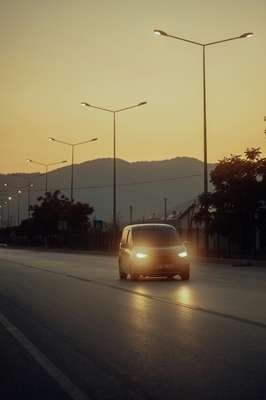Flashy encounters: this friendly driver’s gesture could cost drivers $2200!
By
Danielle F.
- Replies 14
Driving on Australian roads comes with its own set of rules and etiquette.
Some of these rules are common courtesy to many drivers.
However, what's considered a friendly heads-up to your fellow motorists could be a costly mistake.
Flashing your headlights to warn others of speed cameras or random breath tests (RBTs) could lead to hefty fines.
This came as a surprise, as it's a practice adopted by drivers across the country.
Flashing one's headlights alert other drivers about oncoming traffic or give a heads-up for law enforcement ahead.
However, in New South Wales, this could fine drivers for up to $2200.
While the gesture is well-intentioned, it's essential to understand why it's against the law.
Astor Legal's Principal Lawyer, Avinash Singh, noted a significant increase in offences related to flashing headlights.
This has been prevalent in areas where mobile speed cameras or RBTs are in operation.
'Many people believe they cannot be charged for flashing their headlights to warn of police because there is no specific rule that prohibits this,' Mr Singh explained.
However, under Rule 218-1 of the NSW Road Rules 2014, it's an offence to use high-beam headlights when there is another vehicle incoming within 200 metres.
Regulation 219 of the law also stated that NSW drivers should not use any light fitted to their vehicle that could dazzle another road user.
This rule aimed to prevent accidents caused by temporary blindness from bright lights, especially at night.
Police catch flashing drivers in the act by setting up observation points near speed cameras or RBTs.
Officers stationed nearby look for drivers trying to circumvent the checks or flashing other drivers.
Mr Singh also mentioned that Australian states and territories have varying laws regarding headlights.
Victoria and Queensland have similar laws in NSW, as they prohibit using high-beam headlights within 200 metres of another vehicle.
However, the laws are more lenient in Queensland and the Northern Territory.
They allow drivers to flash their headlights briefly before overtaking another vehicle.
Regardless of state, the best course of action is to always adhere to the speed limits.
If you're concerned about the safety of other drivers, consider reporting dangerous conditions or hazards to the authorities.

Have you ever been fined for flashing your headlights? Share your experiences and thoughts about this rule in the comments section below!
Some of these rules are common courtesy to many drivers.
However, what's considered a friendly heads-up to your fellow motorists could be a costly mistake.
Flashing your headlights to warn others of speed cameras or random breath tests (RBTs) could lead to hefty fines.
This came as a surprise, as it's a practice adopted by drivers across the country.
Flashing one's headlights alert other drivers about oncoming traffic or give a heads-up for law enforcement ahead.
However, in New South Wales, this could fine drivers for up to $2200.
While the gesture is well-intentioned, it's essential to understand why it's against the law.
Astor Legal's Principal Lawyer, Avinash Singh, noted a significant increase in offences related to flashing headlights.
This has been prevalent in areas where mobile speed cameras or RBTs are in operation.
'Many people believe they cannot be charged for flashing their headlights to warn of police because there is no specific rule that prohibits this,' Mr Singh explained.
However, under Rule 218-1 of the NSW Road Rules 2014, it's an offence to use high-beam headlights when there is another vehicle incoming within 200 metres.
Regulation 219 of the law also stated that NSW drivers should not use any light fitted to their vehicle that could dazzle another road user.
This rule aimed to prevent accidents caused by temporary blindness from bright lights, especially at night.
Police catch flashing drivers in the act by setting up observation points near speed cameras or RBTs.
Officers stationed nearby look for drivers trying to circumvent the checks or flashing other drivers.
Mr Singh also mentioned that Australian states and territories have varying laws regarding headlights.
Victoria and Queensland have similar laws in NSW, as they prohibit using high-beam headlights within 200 metres of another vehicle.
However, the laws are more lenient in Queensland and the Northern Territory.
They allow drivers to flash their headlights briefly before overtaking another vehicle.
Regardless of state, the best course of action is to always adhere to the speed limits.
If you're concerned about the safety of other drivers, consider reporting dangerous conditions or hazards to the authorities.
Key Takeaways
- NSW drivers could be fined up to $2200 for illegally flashing their headlights.
- Drivers flash their headlights to warn others about speed cameras or random breathing tests (RBTs) on the road.
- According to legal experts, there has been an increase in offences related to flashing headlights.
- Other states and territories applied varying regulations about headlights but encouraged drivers to practise caution and safety on the road.








